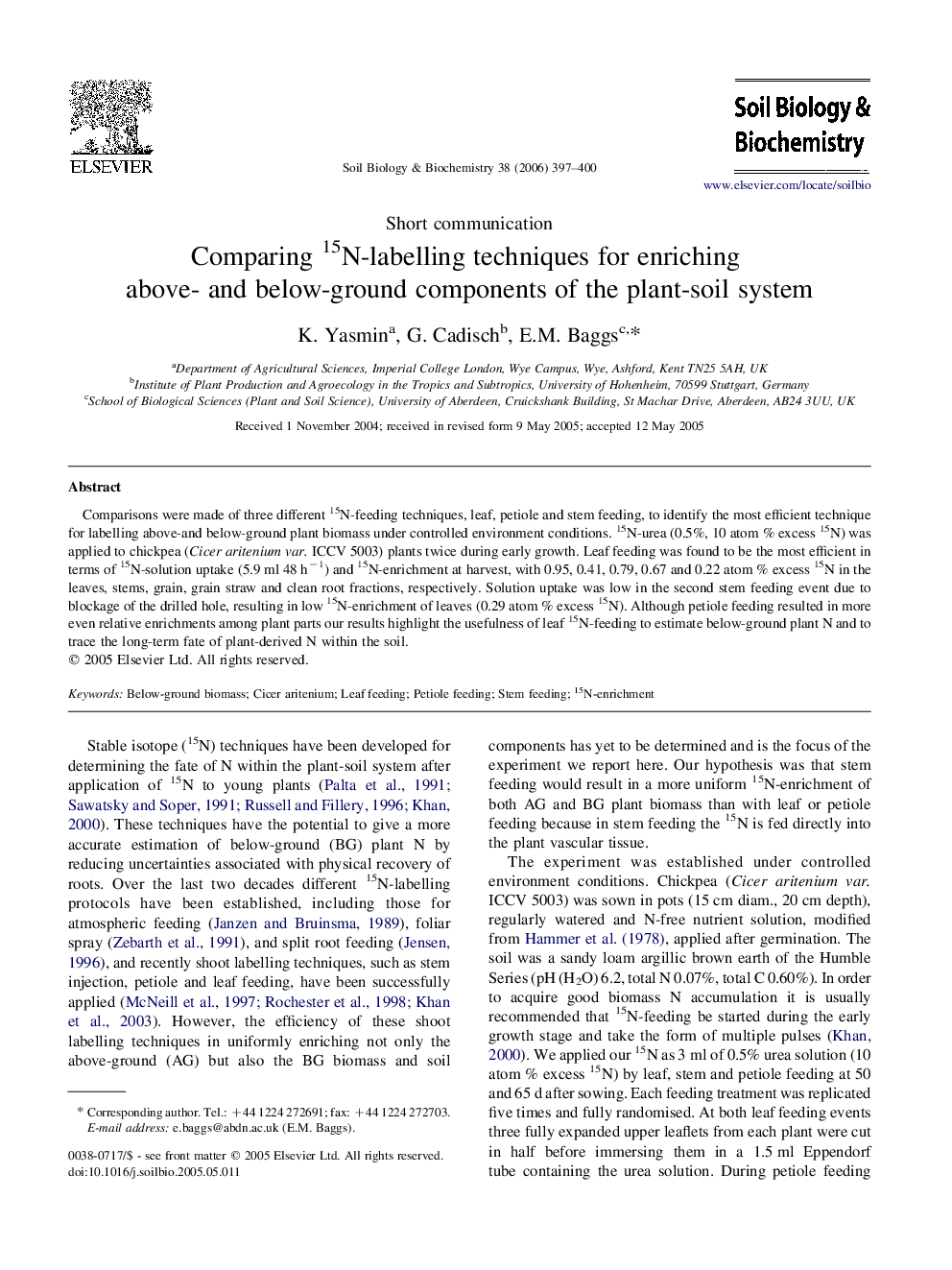| Article ID | Journal | Published Year | Pages | File Type |
|---|---|---|---|---|
| 2026791 | Soil Biology and Biochemistry | 2006 | 4 Pages |
Comparisons were made of three different 15N-feeding techniques, leaf, petiole and stem feeding, to identify the most efficient technique for labelling above-and below-ground plant biomass under controlled environment conditions. 15N-urea (0.5%, 10 atom % excess 15N) was applied to chickpea (Cicer aritenium var. ICCV 5003) plants twice during early growth. Leaf feeding was found to be the most efficient in terms of 15N-solution uptake (5.9 ml 48 h−1) and 15N-enrichment at harvest, with 0.95, 0.41, 0.79, 0.67 and 0.22 atom % excess 15N in the leaves, stems, grain, grain straw and clean root fractions, respectively. Solution uptake was low in the second stem feeding event due to blockage of the drilled hole, resulting in low 15N-enrichment of leaves (0.29 atom % excess 15N). Although petiole feeding resulted in more even relative enrichments among plant parts our results highlight the usefulness of leaf 15N-feeding to estimate below-ground plant N and to trace the long-term fate of plant-derived N within the soil.
